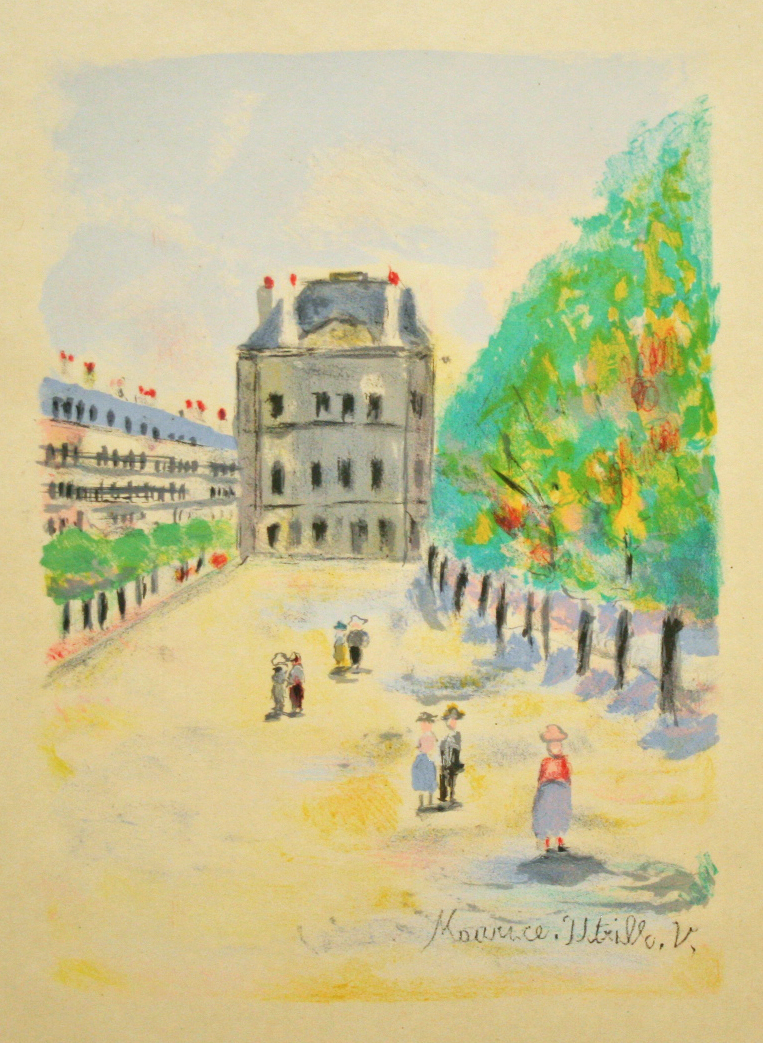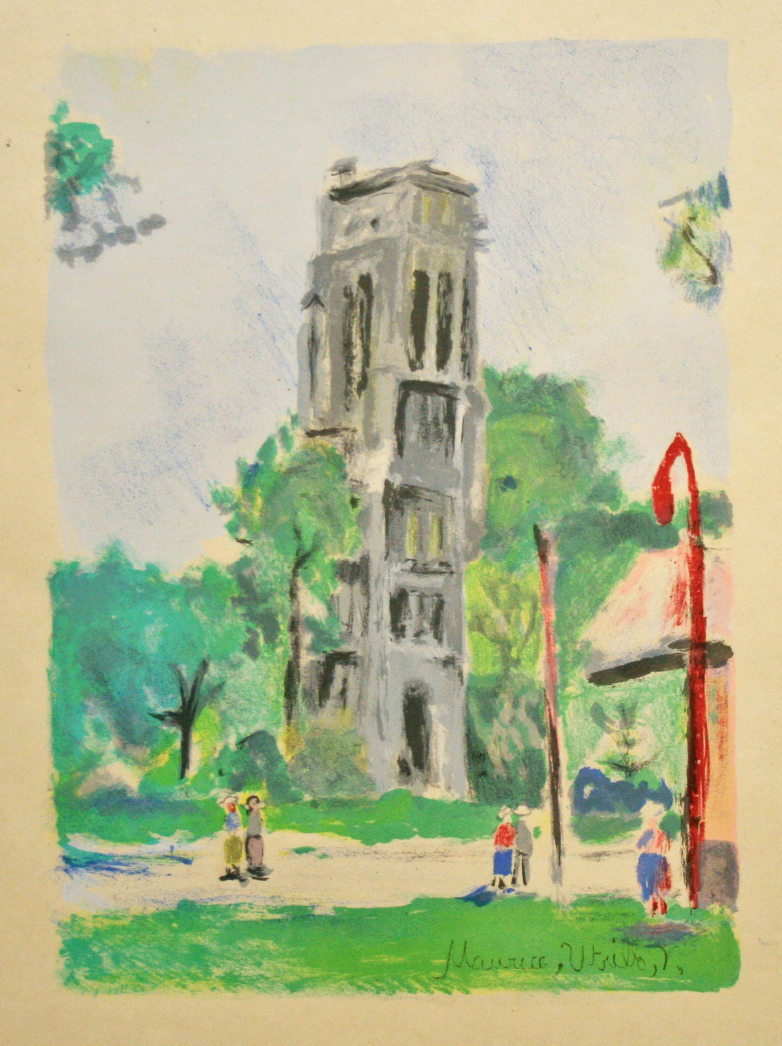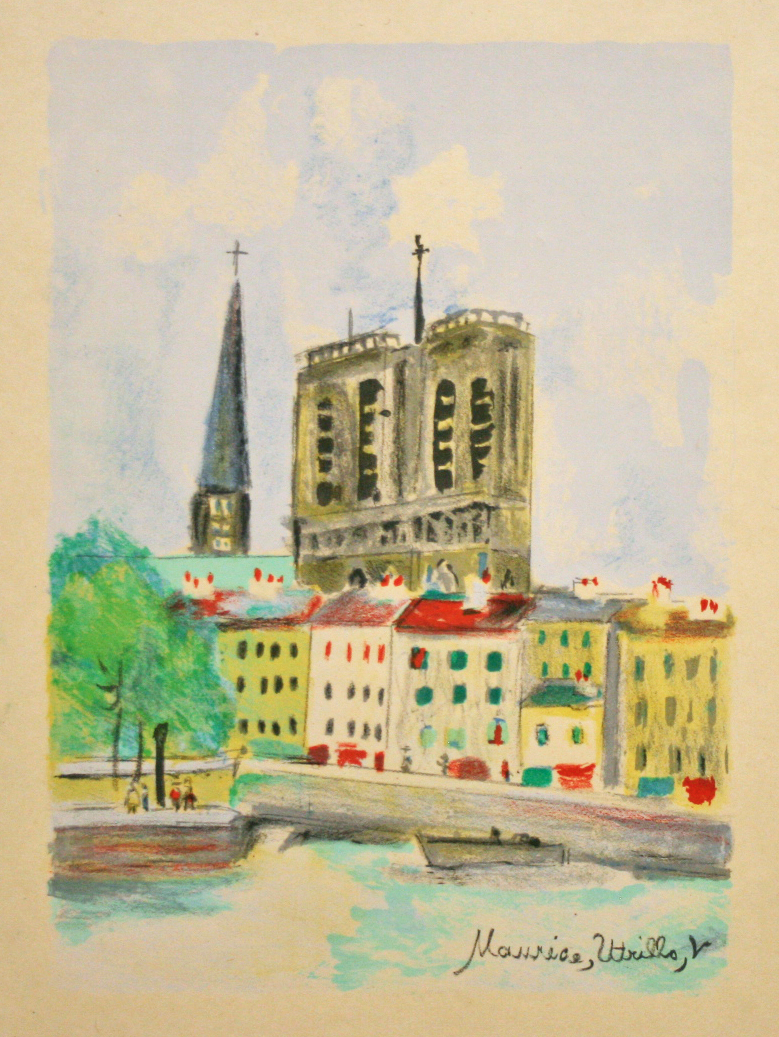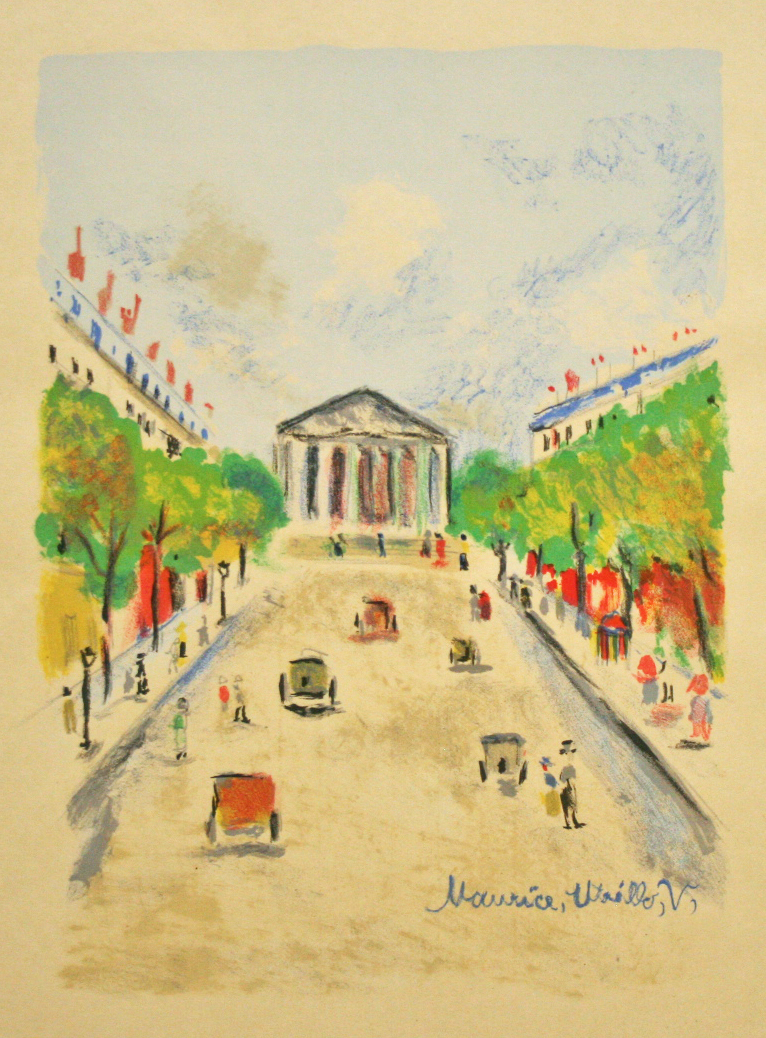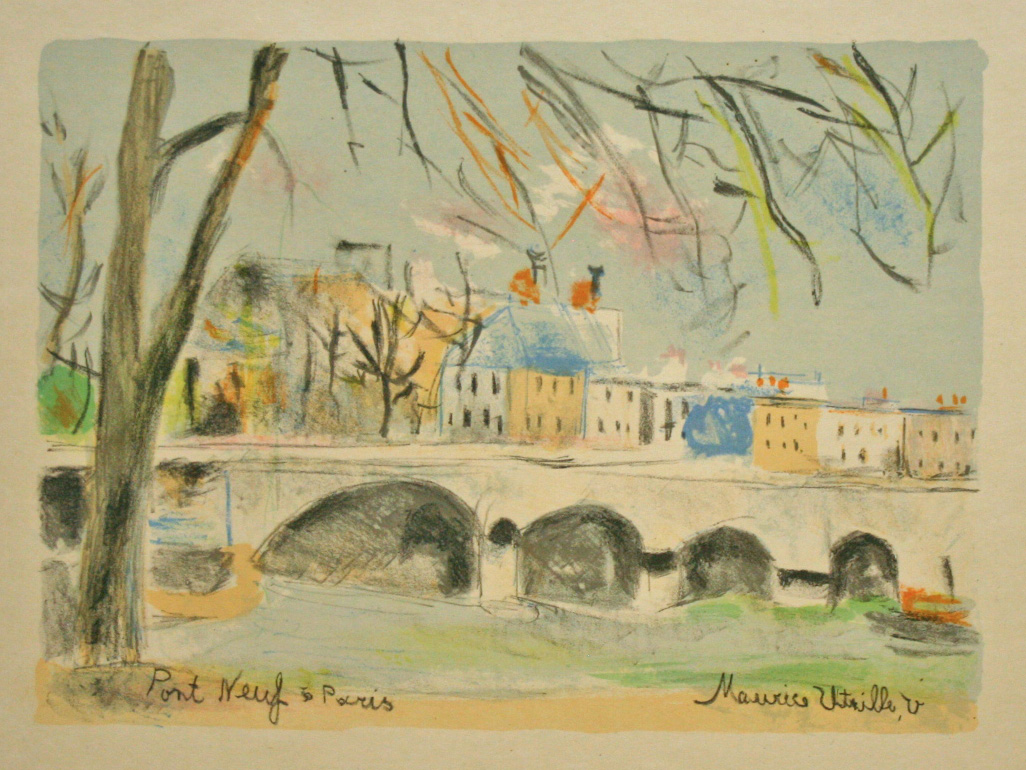Arguably the best-known portrayer of Paris, he is known for consolidating structure and texture, as contrasted with Impressionism. His interpretations of Parisian streets contributed to the popularization and romantic imagery of that period. People, however, were portrayed as solitary figures representing social isolation. Maurice Utrillo was the son of Marie-Clementine Valadon, an accomplished young model in 1880’s Paris and the Spanish writer and art critic Miguel Utrillo. Valadon began her own artistic career by posing for such painters as Puvis de Chavannes, Pierre-Auguste Renoir and Berthe Morisot.
Maurice Utrillo was the son of Marie-Clementine Valadon, an accomplished young model in 1880’s Paris and the Spanish writer and art critic Miguel Utrillo. Valadon began her own artistic career by posing for such painters as Puvis de Chavannes, Pierre-Auguste Renoir and Berthe Morisot.
She became the protégé of Henri Toulouse-Lautrec, who, along with suggesting she change her name to a more lyrical “Suzanne,” introduced her to Edgar Degas, who became her mentor and encouraged her painting career.
A troubled teenager, Utrillo was guided by his mother to focus his excess energy on artistic pursuits. He began to paint and although he had never exhibited artistic tendencies, his talent soon became apparent. Suzanne continued to support and encourage him; and although she provided some instruction, Maurice was largely self-taught.
Arguably the best-known portrayer of Paris, he is known for consolidating structure and texture, as contrasted with Impressionism. His interpretations of Parisian streets contributed to the popularization and romantic imagery of that period. People, however, were portrayed as solitary figures representing social isolation.
In 1924, he relocated to a chateau near Lyon, France, away from his more favored city of Paris in order to focus his artistic practice. His genius has been highly recognized and he is regarded by many as the century’s greatest painter of street and urban scenes, particularly Montmartre and the artists’ quarter pre-World War I. And while he produced many paintings of French cathedrals and panoramic depictions of the surrounding countryside – and even a few florals – it is the street scenes of the industrial suburbs and the little-known sights of the French capital for which he is remembered.

